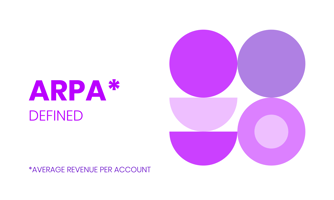Understanding how much a customer is worth throughout their relationship with a business is...
Understanding Sales Potential: Definition, Application, and Strategies for Leveraging It
Sales Potential is an evidence-based estimate of the achievable sales or billing level for an individual business account across different offerings. It is derived from the behavior of similar accounts within a peer group, providing insights into what could realistically be achieved within a given market segment.
In this context, "evidence-based" means analyzing existing account data to establish benchmarks for what constitutes a "good" sales level. These benchmarks are dynamic—sales potential evolves as account behaviors and market conditions change. As performance improves, sales potential can increase accordingly.
Why is Sales Potential Not a Fixed Figure?
Sales potential is dynamic, not a fixed number. As sales performance improves or as more data becomes available, the evidence supporting the potential changes. This allows businesses to refine their forecasts and adjust their strategies to better capture growth opportunities. Recent data indicates that businesses leveraging advanced analytics can achieve significant revenue growth.
For instance, Salesforce's State of Sales report reveals that 83% of sales teams utilizing AI experienced revenue growth in the past year, compared to 66% among teams not employing AI. McKinsey agrees, stating that advanced analytics promote higher returns.
The Role of Peer Groups in Defining Sales Potential
A key factor in estimating sales potential is the use of "similar" or "peer" accounts for comparison. By analyzing these peers, businesses can model the market and segment accounts into groups, facilitating the prediction of potential sales outcomes.
The more specific the segmentation (e.g., using the Standard Industry Classification level 3), the larger the dataset required to derive meaningful insights, especially if the account base is highly diverse. However, with advanced clustering and segmentation techniques, businesses can still gain valuable insights from smaller datasets. This is where AI and analytics come into play.
THE ROLE OF AI AND ADVANCED ANALYTICS IN SALES POTENTIAL
AI and advanced analytics take segmentation a step further by using machine learning to identify patterns in the data that may not be immediately apparent. These systems can process large volumes of data in real-time, allowing businesses to not only identify which peer groups are most relevant, but also predict which accounts are most likely to show high growth. With AI-driven insights, companies can respond faster to changes in the market and adjust their sales strategies accordingly.
Understanding Sales Potential in Different Business Contexts
Sales potential varies depending on the stage of the business and market maturity.
- Early-Stage Business: New customers represent "greenfield" opportunities, where the focus is on introducing new solutions to the market.
- Mature Business: Growth comes primarily from winning customers from competitors. At this stage, strategies shift toward demand generation, lead nurturing, and retention. Risk management becomes a key factor in sustaining growth.
Example of Variations in Potential:
- Segment A: High volume of customers—significant potential for upselling, cross-selling, and new customer acquisition.
- Segment B: No existing customers—no evidence of sales potential.
PRACTICAL USE CASES: HOW TO LEVERAGE SALES POTENTIAL FOR GROWTH
-
Account Planning
Sales potential allows account managers to identify which offerings are currently generating revenue and where growth opportunities exist. By combining current value with potential sales, account managers can prioritize areas for upselling, cross-selling, and improving retention. This strategic approach helps drive revenue and strengthen customer relationships, focusing efforts where growth is most likely. -
Growth Planning
Sales potential is also crucial for growth planning. By analyzing macro-market data, such as company size, industry, geographic location, and other attributes, businesses can identify high-potential segments. This helps define an “Ideal Offering Profile” that supports both organic growth through existing customers and new customer acquisition. Prioritizing these segments ensures that marketing efforts focus on areas with the greatest potential for impact. -
Offering Management
Understanding sales potential aids in determining the Ideal Customer Profile (ICP). By identifying customer types with the highest growth prospects, businesses can effectively allocate resources and target the right customers with the right offerings. This improves both the sales process and customer satisfaction by focusing efforts where they will be most effective.
INTEGRATION WITH OTHER BUSINESS FUNCTIONS
Sales potential doesn’t just benefit the sales team; it informs other areas of the business, too. Marketing teams can align their campaigns with high-potential segments, while customer success teams can prioritize accounts that need extra attention, creating a cohesive and holistic approach that means more happy customers for your business.
Another example is that marketing departments can use sales potential models to target high-value accounts with tailored messaging, leading to more effective campaigns. Similarly, customer success teams can leverage sales potential insights to identify at-risk accounts and proactively engage them with retention strategies. This creates a fully aligned approach where each department is working with a unified understanding of account opportunities, ultimately driving business growth and success.
READ MORE: The Sales Performance Illusion: Why Your Metrics Are Misleading You
Conclusion
Sales potential is not just a metric—it’s a strategic tool that can drive the long-term success of any business. By leveraging evidence-based insights, integrating AI and analytics, and continuously evolving your understanding of market dynamics, businesses can transform their approach to account planning, growth, and offering management. But it doesn’t stop there. In an era where data is becoming increasingly central to business decision-making, harnessing the full potential of these insights will allow businesses to stay ahead of the curve, fostering deeper customer relationships and enabling more informed, impactful strategies.
Ultimately, by modeling markets through segmentation and clustering techniques, businesses can build scalable, data-driven approaches that unlock growth opportunities, even in the most diverse and fragmented markets.
LEARN MORE ABOUT PRACTICAL USE CASES FOR POTENTIAL
Value and Potential Based segmenting for management
ARPA (Average Revenue Per Account) Defined





